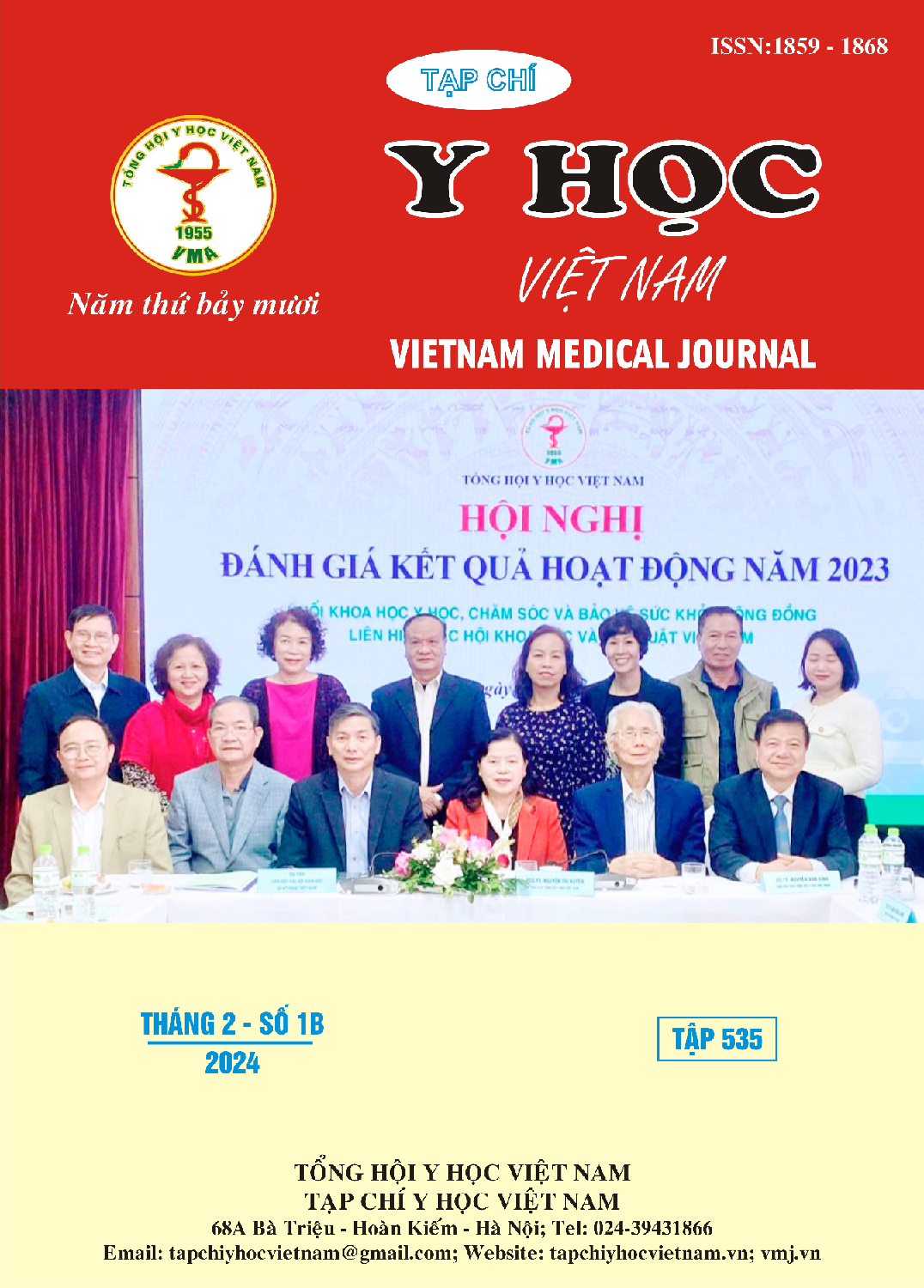THE EFFECTIVENESS OF SPERMATID INJECTION IN INFERTILITY TREATMENT FOR MEN WITH NON-OBSTRUCTIVE AZOOSPERMIA
Main Article Content
Abstract
Background and aim: About 1% of men suffer from azoospermia, a condition of having no sperm in the ejaculate. Non-obstructive azoospermia, which affects 60% of azoospermia patients, is the most severe form of male infertility and requires testicular sperm extraction for sperm retrieval. Despite a 50% success rate, if no mature sperm is found, NOA men have no choice to become biological fathers. To overcome this, researchers have attempted to use spermatid injection techniques, such as round spermatid injection (ROSI) or elongating/elongated spermatid injection (ELSI), to give hope for pregnancy. Spermatids are immature sperm that have completed the second meiotic division and contain a haploid genome as mature spermatozoa. This cohort study aimed to evaluate the effectiveness of ROSI and ELSI in cases where spermatozoa were unavailable. Method: Couples with male factor infertility (men diagnosed with NOA) underwent IVF cycles. The intervention group received ROSI and ELSI. The primary outcome measures were fertilization, embryo development, clinical pregnancy, and live birth rate. Results: There were sixty-six ROSI and five ELSI cycles. The overall fertilization rate with the formation of two pronuclei after ROSI and ELSI was 35.1% and 64.5%, respectively. The clinical pregnancy rate of ROSI was 1.3%, much lower than ELSI (37.5%). Normal pregnancy and live birth were obtained in both groups. Conclusion: ROSI and ELSI can be considered alternative methods of infertility treatment in cases where spermatozoa are unavailable
Article Details
Keywords
Round Spermatid Injection, Elongrated Spermatid Injection, Elongating Spermatid Injection, Non-Obstructive Azoospermia, ROSI, ELSI, NOA
References
2. Esteves, S.C., R. Miyaoka, and A. Agarwal, An update on the clinical assessment of the infertile male. Clinics, 2011. 66(4): p. 691-700.
3. Achermann, A.P., T.A. Pereira, and S.C. Esteves, Microdissection testicular sperm extraction (micro-TESE) in men with infertility due to nonobstructive azoospermia: summary of current literature. International Urology and Nephrology, 2021. 53(11): p. 2193-2210.
4. Corona, G., et al., Sperm recovery and ICSI outcomes in men with non-obstructive azoospermia: a systematic review and meta-analysis. Human reproduction update, 2019. 25(6): p. 733-757.
5. Hanson, B.M., et al., Round spermatid injection into human oocytes: a systematic review and meta-analysis. Asian Journal of Andrology, 2021. 23(4): p. 363.
6. Tanaka, A., et al., Fourteen babies born after round spermatid injection into human oocytes. Proceedings of the National Academy of Sciences, 2015. 112(47): p. 14629-14634.
7. Sousa, M., et al., Predictive value of testicular histology in secretory azoospermic subgroups and clinical outcome after microinjection of fresh and frozen–thawed sperm and spermatids. Human Reproduction, 2002. 17(7): p. 1800-1810.
8. Tanaka, A., et al., Ninety babies born after round spermatid injection into oocytes: survey of their development from fertilization to 2 years of age. Fertility and Sterility, 2018. 110(3): p. 443-451.
9. Kishigami, S., et al., Epigenetic abnormalities of the mouse paternal zygotic genome associated with microinsemination of round spermatids. Developmental biology, 2006. 289(1): p. 195-205.
10. Minh, N., et al. Histone Deacetylase Inhibitor Corrects Histone H3K9 Modification in Round Spermatid DNA at the 2-Cell Stage and Increases the Development of ROSI Embryos. in 6th International Conference on the Development of Biomedical Engineering in Vietnam (BME6) 6. 2018. Springer.


